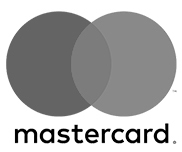Lessons of Auschwitz: VR tribute by school students RT
This work
in other
nominations
Video
Non-commercial Projects
Innovation
Visual effects
Animation, motion-design
Task
The Holocaust. One of the most inhumane events in history in which approximately 6 million Jews were killed. The Auschwitz concentration camp remains one of the world’s most painful memorial sites serving as a living reminder of what evil can look like. But as time passes, so do the Holocaust survivors. The commemorative link between generations is dimming. Today, in a mostly digital world, it is important to restore the gap and keep younger generations interested in learning history.
Ideas and solutions
To mark the 75th anniversary of its liberation we brought nine students from a Moscow high school - between 13 and 16 years old - to the Memorial in Poland to personally undergo this experience. After the trip, we asked them to express their reactions in VR under the creative guidance of Russia’s leading XR artist, Denis Semionov. “Lessons of Auschwitz” is a social experiment that aims to show how history can be retold and reimagined by younger generations through digital art. Using innovative XR film technology we aimed to create a new kind of commemorative tribute which will engage and touch younger viewers and inspire them to learn more about the Holocaust. “Lessons of Auschwitz” unites history, teenagers’ personal emotions, the lament of a theremin and innovative immersive tech to create powerful, moving art that sustains historical memory in a digital world. A comprehensive multi-stage six-month production lies behind this XR experiment. In stage one, the school students learned about the Holocaust during a private tour at the Moscow Jewish Museum and Tolerance Center. We teamed up with composer Peter Theremin, who plays the world's oldest electronic instrument patented by his great grandfather, Léon Theremin. Peter composed an original score for the film. The students used Tilt Brush to draw their 3D images and were filmed with volumetric video - a technique capturing three-dimensional space, allowing the images to be transformed directly into 3D where they would later react to sound waves. The project also features a unique #VictoryFont "May" which was created specially for the project - behind each character is a documented Reichstag inscription, hand-written 75 years ago by soldiers who conquered Berlin in 1945. Through the font’s characters and symbols, “May” creates a narrative link between the past and the present, between the Victory heroes and us, the inheritors of their legacy.






